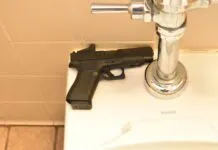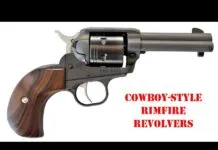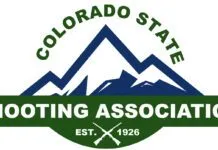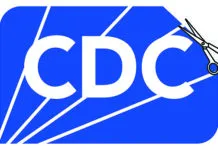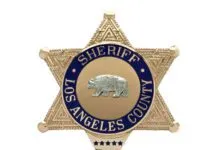Gun Tests magazine tested three 357 Mag lever-action rifles in the October 2012 issue. Here’s an excerpt of that report:
Whether you’re an adherent of Cowboy Action Shooting or not, you’ve been the lucky recipient of development in guns suited for the sport, such as new or improved single-action revolvers, more choices and gunsmithing of period shotguns, and in the expansion of slide actions and levers actions in rifles. Two months ago, we compared three single-action revolvers chambered in 357 Magnum, with the nod in that test going to the Cimarron Evil Roy No. ER4104 357 Magnum, which comes from the factory tuned for fast shooting with a slicked-up action and a great trigger. If you plan to play in that game and simplify your cartridge coverage, pairing an Evil Roy with a companion 357 Mag lever-action rifle makes sense.
To see which rifle comes closest to taming the New West of Cowboy Action Shooting, we compared Henry’s Big Boy, Cimarron’s Evil Roy Brush Popper, and the LSI/Chiappa 1892 for fit, feel, performance, and accuracy using the same modern and cowboy action loads from the revolver test. Here’s what we thought of the Henry Big Boy.
Henry Big Boy No. H006M 357 Magnum/38 Special, $900
An ideal companion to a pair of 357 Magnum handguns, this brass-framed rifle will compliment any Old West duds you choose to wear. The polished brass frame was set off by excellent figured walnut and nice bluing on the octagonal barrel. Henry also broke the edges of the muzzle, which made the front of the Henry much less likely to cut the shooter’s hands.
The barrel band and buttplate were also brass. We preferred the execution of the Henry’s buttplate because the edges were rounded and the buttplate features much less curvature than the others. Inletting was also excellent, but with slightly larger gaps than the others at the tang and buttplate edges. But the wood-to-metal fits sat flush, which gave it an edge over the Cimarron. The clear finish showed no open pores and added a rich, muted but dent-resistant glow to the wood. The company name and caliber designations on the 20-inch barrel were gold filled.
On opening the rifle’s burgundy-colored lever, we were struck by how smooth it was. The bolt was a round bar similar to that found on Marlins. There was no obvious lever-lockout safety, but the trigger could not be pulled unless the lever was fully home. The hammer was either fully cocked or all the way down, no half-cock. But there was a hidden trigger interlock that would prevent the rifle’s firing unless the trigger were fully depressed.
The traditional buckhorn rear sight sported a white diamond that made lining up the front brass bead exact and repeatable, our shooters said. The rear assembly was set into a spring-loaded ladder for elevation changes. The rear sight sits in a dovetail slot cutout in the barrel, the base has a small a locking screw. To adjust the rifle for windage, loosen the screw and use a plastic mallet to tap it in the direction you want your hits to land. For example: if you are shooting to the left, you need to tap the sight over to the right to correct the point of impact. Conversely, if you are shooting to the right, then tap the sight to the left. We had to drift the rear slightly to get centered.
The tubular magazine held 10 rounds, and loading was easy. Twist the knurled steel end of the brass loading tube and withdraw it until the loading port is fully exposed. Elevate the muzzle slightly and drop in the required rounds. This should be done with the action closed. Press the tube back into place and give it a twist to lock it. We found this loading system to be far easier than fighting the spring-loaded gate of the Puma, but not as easy to load on the fly as the Cimarron. If you happen to bend or break your brass magazine plunger assembly, Henry offers replacements for $21.95.
For non-Cowboy use, the Henry’s side ejection would make a scope a great addition, but there were no predrilled holes to mount a scope. However, in September 2011 Henry began shipping 2nd generation Big Boy rifles, which feature receivers that are drilled and tapped for the scope mount. In 1st generation rifles, the barrels were drilled and tapped, if rollmarked “Bayonne NJ.” First-generation Big Boys like our unit use a BB-CSM Cantilever Scope Mount. The 2nd Generation (current production) rifles use the new style BB-RSM Receiver Scope Mount. All are $27.50 plus shipping from the company. There’s also a Hi-Viz sight system, $40, if you want better sights but not optics. Other accessories worth considering are large-loop levers ($50), hammer extensions ($11), and swivel kits ($17).
Our Team Said: We think this rifle is too heavy for its power — fully charged, it tipped the scales at 8.9 pounds. It had the best sights in the test and it was the most accurate with all three ammunition types. We felt that the Big Boy balanced well for quick shooting, and the lever loop was the largest and most comfortable. Our testers preferred the Cimarron’s loading gate to the removable tube in the Henry. This is not a fault with the gun, just our testers’ preference. And the Henry is much less than the Popper, which makes it a Best Buy.



